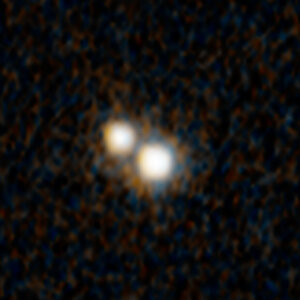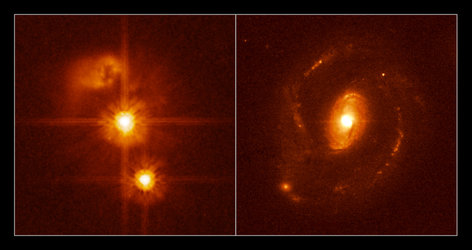Accept all cookies Accept only essential cookies See our Cookie Notice

About ESA
The European Space Agency (ESA) is Europe’s gateway to space. Its mission is to shape the development of Europe’s space capability and ensure that investment in space continues to deliver benefits to the citizens of Europe and the world.
Highlights
ESA - United space in Europe
This is ESA ESA facts Member States & Cooperating States Funding Director General Top management For Member State Delegations European vision European Space Policy ESA & EU Responsibility & Sustainability Annual Report Calendar of meetings Corporate newsEstablishments & sites
ESA Headquarters ESA ESTEC ESA ESOC ESA ESRIN ESA EAC ESA ESAC Europe's Spaceport ESA ESEC ESA ECSAT Brussels Office Washington OfficeWorking with ESA
Business with ESA ESA Commercialisation Gateway Law at ESA Careers Cyber resilience at ESA IT at ESA Newsroom Partnerships Merchandising Licence Education Open Space Innovation Platform Integrity and Reporting Administrative Tribunal Health and SafetyMore about ESA
History ESA Historical Archives Exhibitions Publications Art & Culture ESA Merchandise Kids Diversity ESA Brand Centre ESA ChampionsLatest
Space in Member States
Find out more about space activities in our 22 Member States, and understand how ESA works together with their national agencies, institutions and organisations.
Science & Exploration
Exploring our Solar System and unlocking the secrets of the Universe
Go to topicAstronauts
Missions
Juice Euclid Webb Solar Orbiter BepiColombo Gaia ExoMars Cheops Exoplanet missions More missionsActivities
International Space Station Orion service module Gateway Concordia Caves & Pangaea BenefitsLatest
Space Safety
Protecting life and infrastructure on Earth and in orbit
Go to topicAsteroids
Asteroids and Planetary Defence Asteroid danger explained Flyeye telescope: asteroid detection Hera mission: asteroid deflection Near-Earth Object Coordination CentreSpace junk
About space debris Space debris by the numbers Space Environment Report In space refuelling, refurbishing and removingSafety from space
Clean Space ecodesign Zero Debris Technologies Space for Earth Supporting Sustainable DevelopmentLatest
Applications
Using space to benefit citizens and meet future challenges on Earth
Go to topicObserving the Earth
Observing the Earth Future EO Copernicus Meteorology Space for our climate Satellite missionsCommercialisation
ESA Commercialisation Gateway Open Space Innovation Platform Business Incubation ESA Space SolutionsLatest
Enabling & Support
Making space accessible and developing the technologies for the future
Go to topicBuilding missions
Space Engineering and Technology Test centre Laboratories Concurrent Design Facility Preparing for the future Shaping the Future Discovery and Preparation Advanced Concepts TeamSpace transportation
Space Transportation Ariane Vega Space Rider Future space transportation Boost! Europe's Spaceport Launches from Europe's Spaceport from 2012Latest

Quasar J0742+2704
Thank you for liking
You have already liked this page, you can only like it once!
Quasar J0742+2704 (center) became the subject of astronomers’ interest after it was discovered to have a newborn jet blasting from the disk around its supermassive black hole in 2020, using the Karl G. Jansky Very Large Array (VLA) radio observatory. This led to follow-up with other observatories in an effort to determine the properties of the galaxy and what may have triggered the jet.
While the jet itself cannot be seen in this NASA/ESA Hubble Space Telescope infrared-light image, the spiral shape of J0742+2704 is clear, with faint but detectable arms branching above and below the galaxy center. This was a big surprise to the research team, as quasars hosting jets are typically elliptical-shaped, and it is suspected that messy mergers with other galaxies are what funnel gas toward the black hole and fuel jets. These mergers would also disrupt any spiral formation a galaxy may have had before mixing its contents with another galaxy.
Though its intact spiral shape means it has not experienced a major merger, Hubble does show evidence that its lower arm has been disrupted, possibly by the tidal forces of interaction with another galaxy. This could mean that jets can be triggered by a far less involved, dramatic interaction of galaxies than a full merger. The large galaxy to the lower right of the quasar appears to be a ring galaxy, another sign of interaction. Ring galaxies form after a small galaxy passes through the center of a larger galaxy, reconfiguring its gas and dust.
The brightest parts of this image — foreground stars and the bright center of the quasar — show the characteristic “starry” spikes produced by Hubble (and other telescopes’) interior structure. They are not actual aspects of the cosmic objects
[Image description: Field of yellow galaxies of various sizes and distances on a black background. Two larger galaxies are prominent. Centered is a galaxy with a bright core and faint spiral arms coming off its top and bottom. To the lower right of the spiral is a ring galaxy with an apparent gap between its bright core and the ring oval of dust and gas surrounding it.]
-
CREDIT
NASA, ESA, K. Nyland (United States Naval Research Laboratory), J. DePasquale (STScI) -
LICENCE
CC BY 4.0 INT or ESA Standard Licence
(content can be used under either licence)

Everything, in one place, all at once

Hubble unexpectedly finds double quasar in distant Universe

Two Hubble images from a sample of 20 nearby quasars

Seeing quintuple















 Germany
Germany
 Austria
Austria
 Belgium
Belgium
 Denmark
Denmark
 Spain
Spain
 Estonia
Estonia
 Finland
Finland
 France
France
 Greece
Greece
 Hungary
Hungary
 Ireland
Ireland
 Italy
Italy
 Luxembourg
Luxembourg
 Norway
Norway
 The Netherlands
The Netherlands
 Poland
Poland
 Portugal
Portugal
 Czechia
Czechia
 Romania
Romania
 United Kingdom
United Kingdom
 Sweden
Sweden
 Switzerland
Switzerland























